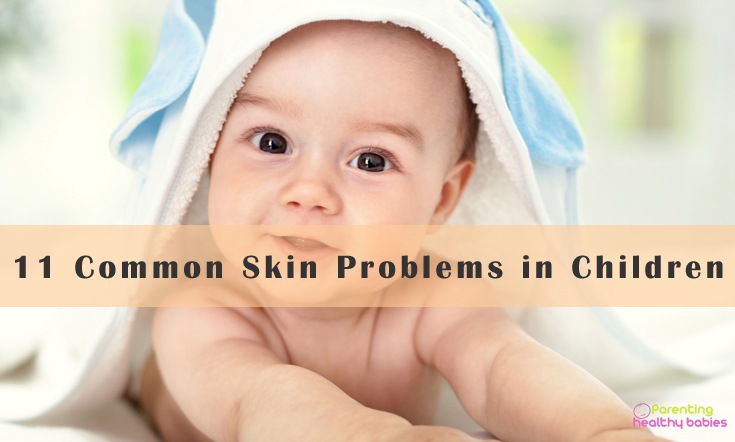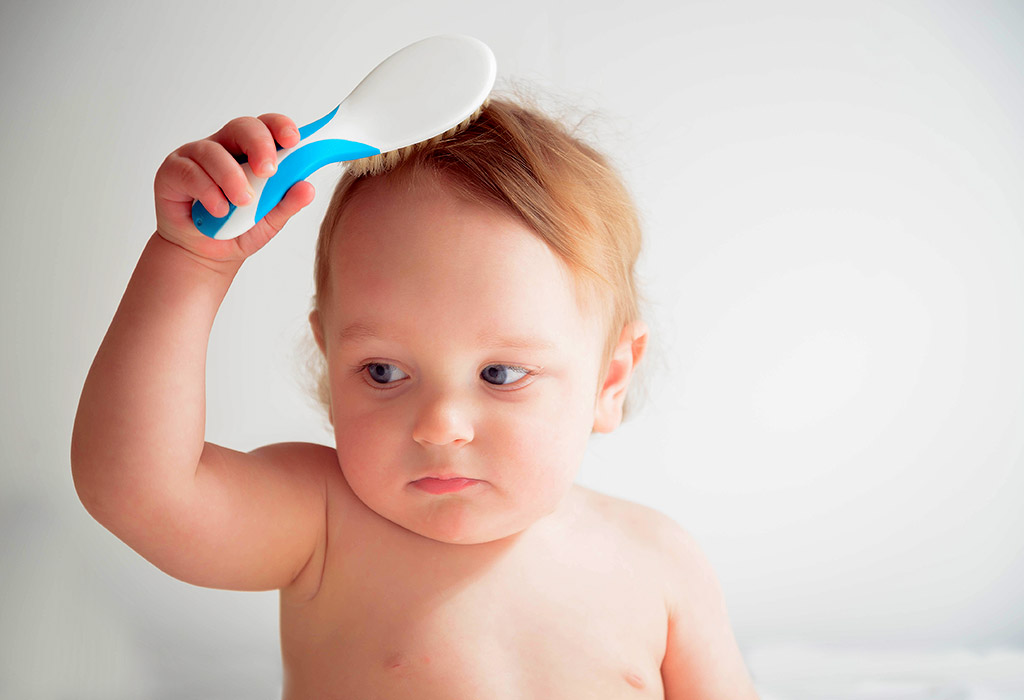Skin problems are very common in children. Most children will suffer from skin infections at one point of time in their childhood. Some of the skin problems may be worrisome, but mostly they are easily curable. These skin problems may vary in severity and also symptoms. They can be painful as well as painless. There are different types of skin disorders in children.
Some common and easily curable skin disorders are diaper rashes, hives, and chicken pox. Also eczema, psoriasis and warts are few other skin problems. Contact dermatitis is a kind of temporary skin disorder that occurs commonly in children. Measles, ringworm, allergic rashes and fifth disease are some other skin disorders. Keep reading to know more about the common skin problems in children.
11 Common Skin Problems in Kids
Diaper rash
Diaper rash is a skin problem that is extremely common in infants wearing diapers. Also known as diaper dermatitis, this kind of skin problems occur from wearing soiled diapers for too long. Diaper rashes cause redness and itching of the skin n contact with the diaper. If the diaper rash lasts longer than 48 hours it needs medical attention. Babies below 2 years of age are most likely to have this skin problem.
Ringworm
Ringworm is a fungal infection of the skin which looks like scaly rings a few centimeters wide. Ringworms are very itchy in nature. This skin problem is contagious. It can be passed between infected people and personal items. Contact with pets and other people infected with ringworms can also cause this skin problem in your child. Ringworms can disappear naturally after a week or two. Sometimes antifungal cream or oral medications can be necessary.
Chicken pox
Chicken pox is another common infection in children. It is caused by a virus. It results in fever and skin rashes. The rashes are itchy and appear as a mix of blisters, spots, and crusted scabs. Chicken pox lasts for a little more than a week. Chicken pox is highly contagious and can spread from touching and even through air. Children can recover from chicken pox naturally without any medications.
Eczema
Eczema refers to a wide range of skin conditions which involve skin inflammation. The most common type of eczema is atopic dermatitis. Atopic dermatitis is an itchy rash which commonly appears on the face and also on the scalp. The rashes also look red. The condition usually appears in a child’s first year of life and may be dry and scaly. It can look like blisters and feel warm to the touch.
Hives
Hives are itchy and red swollen areas of skin caused by chemicals secreted in the body are known as hives. . They are commonly caused by pollen and pet allergens. Certain kinds of foods, as well as insect bites can cause hives. Some medications can also result in hives in children. This is a very common skin problem in children. Hives generally last for a few hours or even days. They disappear on their own.
Impetigo
Impetigo or school sores are quite common in children. This skin problem is caused by bacteria. School sores usually occurs around the mouth and nose and appear as small red blisters. These tiny sores are very itchy and can break open easily. The broken blisters ooze a yellowish liquid and then become scabs. Touching the sores can spread the infection to other parts of the body. It is a contagious skin disease.
Warts
Benign tumor like growths on the skin is called warts. Warts are common skin disorders seen in children. It usually occurs on the hands and feet. They look almost grainy and are round on top. There are different kinds of warts. Warts disappear naturally in most children. Those children who have lower immunity suffer from acute wart problems that might require treatment.
Molluscum contagiosum
This skin problem appears as tiny smooth bumps in a cluster on skin. This is a viral infection that is very common in children. It is a benign skin infection that occurs between 2-5 years of age. This is a contagious skin disorder and can spread through physical contact. It is more common in children who are into swimming and bathing together. Also children with low immunity are more likely to be affected.
Contact dermatitis
Exposure of the skin to allergens may cause contact dermatitis in children. It is a common skin problem that is highly contagious. It looks like a cluster of tiny red pimple like skin lumps. Contact dermatitis only appears if the child comes in contact with some allergic object. It may last for a week or two until it completely heals.
Hand-foot-mouth disease
This is an extremely skin problem in children. It is caused by a particular virus. This skin infection occurs mostly in summer and in early fall. This skin infection causes non-itchy rashes on the hand, feet and mouth. The sores in the mouth are actually painful. This skin problem is highly contagious and spreads through air and physical contact. The disease resolves on its own within a week.
Fifth disease
A common viral skin disease in children is fifth disease. It is also known as “slapped cheek disease”. This disease causes red rashes on the cheeks, arms and legs. This is a contagious disease that can spread through respiratory secretions and saliva of children. It is generally a mild skin infection in children with healthy immunity. It hardly requires any medical attention. The rashes usually last for 10 days. Once the rash develops the disease is no longer contagious.
Conclusion
Skin diseases are fairly common in children. Every one out of three children suffers from skin problems. Most skin problems are benign and resolve on their own. A child with strong immunity will easily recover from these common skin problems. Almost all the common skin problems in children are contagious. It is always best to keep your child safe from contracting these skin diseases. Prevention after all is better than cure. However some skin problems may become acute without proper treatment. Consult a pediatrician if your child has any kind of skin problem.
References
https://www.ncbi.nlm.nih.gov/pmc/articles/PMC449820/
https://www.healthline.com/health/skin-disorders#2













